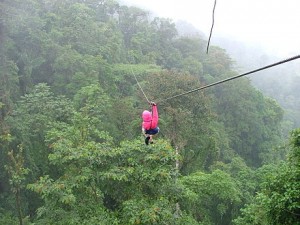10 Oct More Ziplines Means More Injuries—Nearly 10 A Day
 MedicalResearch.com Interview with:
MedicalResearch.com Interview with:
Tracy Mehan, MA
Manager of translational research
Center for Injury Research at Policy
The Research Institute at Nationwide Children’s Hospital
Columbus, OH
Medical Research: What is the background for this study? What are the main findings?
Response: We noticed an increasing number of ziplines popping up all over the United States and wanted to see if there were any potential safety concerns. In 2001 there were only 10 commercial ziplines. By 2012, there were more than 200. If you include the number of ziplines now seen in backyards and in places like outdoor education programs and camps, the number skyrockets to over 13,000.
We found that from 1997 through 2012, there were just under 17,000 non-fatal zipline-related injuries treated in US emergency departments. Almost 70 percent of these injuries occurred in the last four years of the study indicating that this is a growing problem. In 2012 alone, there were more than 3,600 zipline-related injuries, nearly 10 a day.
The majority of the injuries were the result of a fall (77 percent) or a collision (13 percent) into a tree, a support structure, or another person. Close to half of the injuries were broken bones (46 percent) and one of every ten (11.7 percent) patients were admitted to the hospital.
 Medical Research: What should clinicians and patients take away from your report?
Medical Research: What should clinicians and patients take away from your report?
Response: While the rate of injuries may be low, when injuries do occur they can be serious. The high rate of hospitalization we found with ziplining is similar to what we see with adventure sports and reflects the inherent dangers associated with this activity.
We want people to be aware of the risks and also be aware that ziplines are not regulated in every state and that there is not one set of standards that are followed.
If you decide to go ziplining, do your research before you ride. Look for an organization that has well-trained staff and that can show you that their ziplines meet industry safety standards. Follow all posted rules and instructions from staff and always wear proper safety equipment, such as a harness, helmet, and gloves.
Also, due to the inherent risks associated with backyard and homemade ziplines, we recommend that families do not use them. Improper installation, maintenance or use can result in serious injuries and even death.
Medical Research: What recommendations do you have for future research as a result of this study?
Response: We would like to see a uniform set of standards adopted, implemented and enforced in each state. Having one universal zipline standard would make inspection, operation and enforcement easier leading to a safer experience for the rider.
Citation:
Zipline-related injuries treated in US EDs, 1997-2012The American Journal of Emergency Medicine
Available online 15 August 2015
Rachael M. Billock, Jonathan J. Anderegg, Tracy J. Mehan, Thiphalak Chounthirath, Gary A. Smith
[wysija_form id=”5″]
Tracy Mehan, MA (2015). More Ziplines Means More Injuries—Nearly 10 A Day
Last Updated on October 10, 2015 by Marie Benz MD FAAD
